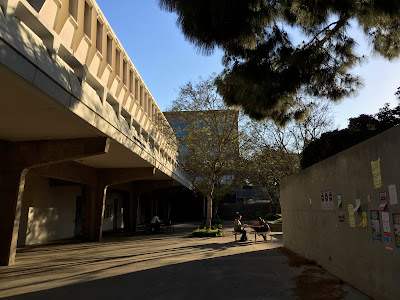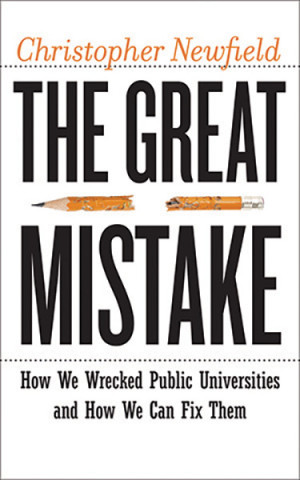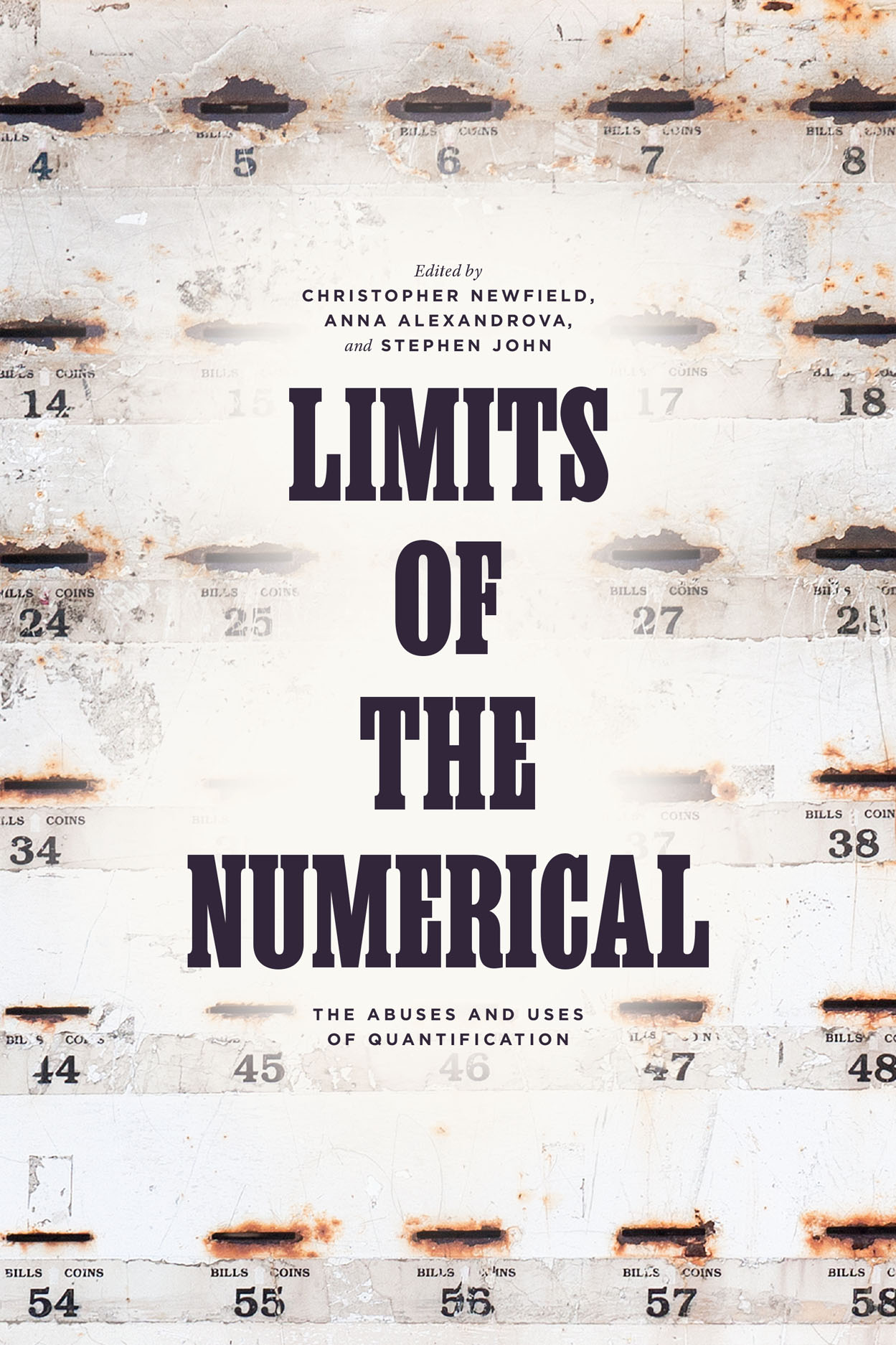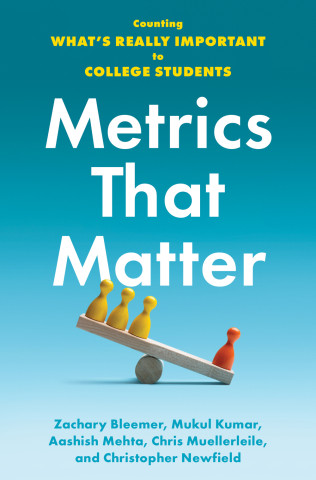 |
| UC Irvine on May 8, 2018 |
This is actually a national question. Trump has done a classic “heighten the contradictions” of the political economy of the US research university.
This political economy has always been unstable, and three decades of reductions in per-student state funding have kept the boat rocking back and forth. Now the Trump Administration has blown holes in most sources of federal research funding. Meanwhile, state funding is mainly flat or down, and will be under renewed pressure as the provisions of Trump’s tax cut bill come into effect.
Colleges are taking on water, and this is to say nothing of the deeper crisis of social mission and public support, embodied in editorials like “It’s a Bad Time to Be a Graduate.”
The US university sector now has a choice: it can face its structural crisis, in particular the crisis of its research funding system, or force campuses to dig even deeper to subsidize it.
In a recent post, I discussed the evidence that the senior management of the University of Minnesota is choosing the second path. I presume that this is the default choice across the country. That’s not good, because this path means, at best, austerity and, more likely, major cuts to instruction and to non-sponsored research, which is most research in law, arts, humanities, and the qualitative social sciences.
Couple this with what Peter Byrne calls “AI hypnosis,” which can be used as an excuse for further instructional cuts, and the cognitive gains of completing college face gradual evaporation. Or so goes one default path.
Like the University of Minnesota, UC Irvine offers an important case study. Its administration has been proactive. The Division of Finance wrote an informative “Budget and Financial Overview: Fiscal Year 2024-25 (FY25).” The Budget Office has a new “Budget Model and All Funds Multi-Year Planning” mechanism. This is coupled with a “Financial Stability Plan” that is responding to a campus structural deficit that they have presented publicly. So far, so good.
I’m going to tell the story of the UCI Budget Overview. I’ll then have to dispute its overall portrait of the campus economy—of who loses money and who doesn’t.
**
UC Irvine is a $6.7 billion university operation. (It was 56th in the US in R&D expenditures in 2022-23, so is more typical of the body of research universities than giants like UCSD or UCLA.) Half of that income comes from UCI Health, the medical center which has recently acquired four more hospitals and does a massive revenue business—nearly $3.5 billion in 2024-25 (FY 25).
In the Overview, medical business is booming, and the Overview claims that “funds flow from the health enterprise to the campus, contributing significantly to academic and support functions across the main campus, including the UCI School of Medicine” (p 7).
The non-medical operation is split 3:2 between “non-core” and “core” operations. Non-core funds include auxiliary units (like housing and parking) as well as research contract and grant expenditures (C&G). Research is of course fully academic and core to the educational mission in spite of being put in non-core. Research funds depend on academic faculty submitting successful research proposals to funding agencies with the full involvement of staff, postdocs, graduate students, and lecturers who also cover the teaching that grant-writers aren’t doing. Faculty apply to federal agencies like NSF, and also get lesser funding from state, corporate, and foundation sources.
Figure 1
The UCI Overview presents this 4/5th of UC Irvine as robust and profitable. It presents the “core” as not so much.
Note that in Figure 1, all the entities, even the medical center, are trying to help the core’s Schools by sending money, apparently with nothing being generated by the Schools. The Schools are charted like a sinkhole—Schools aren’t givers but takers
The core is inseparable from the campus and teaching students. Although the “core missions” are “teaching, research, and public service,” nearly all of UCI core revenues are tied to instruction. This means both state funding and the many kinds of student tuition that UC campuses now charge. Some grant-based indirect cost recovery (ICR) is here as well, some investment earnings, etc. But the core’s salaries for tenure-track faculty, lecturers, Graduate Student Employees (GSEs), and staff are tied to revenues from instruction.
UCI defines the problem of the core in simple terms. Core revenues go up 1-4% a year (Chart 3.2). Core expenses go up 5-8% a year (Chart 3.3). Costs rising at twice the rate of income has led to a projected $70 million deficit in 2026-27, or 5% of the core budget.
The only good revenue news for the core is ICR, which gets special praise. More on this in a bit.
So, UCI defines its budget problem as the core’s expenses, and the Financial Stability Plan as the solution. It’s a model, but at heart is a plan for cuts, of familiar kinds. The UCI core will proceed by “not filling vacant faculty and staff positions, increasing revenue where possible, reducing programs and services where possible, leveraging existing non-core resources, and reducing other operating costs.” The idea is to reduce instructional staff and services—that is to reduce instruction itself. (The only hint of growth again comes from “non-core resources.”)
In the UCI Overview story, all losses are occurring in the academic core, founded on instruction. It assigns no losses to the non-core or to UCI Health. Therefore, all the cuts might logically come from the core as well.
**
The UCI core does lose money, particularly on teaching California resident students, because the state has long underfunded the University very badly, refusing to compensate for quasi-frozen residential tuition, among other things.
But, contrary to the Overview story, the rest of the university loses money as well. Even massive clinical revenues and other auxiliary activities barely cover costs in specific units. (And UCI seems to have negative “uncommitted reserves” (Figure 4)).
First, there’s UCI’s Medical Center, subject to audited systemwide Financial Reports. In the most recent Report, for 2023-24, UCI Health’s Income from Operations was negative $28.6 million (p. 60). Its Change in Net Position is negative $230.8 million (p. 60). Its Transfers to University is negative $91.9 million, meaning the campus sent it about $92 million that year (p 62).
Caveats: these numbers fluctuate from year to year, there are others one could report, they require interpretation (cash flows from Med Center to UC campus are likely repayments / recharges for activities not specified in financial reports), med center accounting is very complicated, and I am not an expert in it.
That said, the Budget Overview is not justified in presenting UCI Health as a general financial donor to the core and its Schools. The arrows in Figure 1 are at best misleading when they show the Schools getting surplus funds from UCI Health, while generating none of their own.
This is an especially dangerous claim at this point in time, as the 1/3rd of UCI Health that comes from Medicare and Medicaid reimbursement will be subject to further reductions when Trump’s health care cuts become fully effective after the 2026 midterm elections.
Next, there’s the “non core,” with its very large research expenditures. The Overview story is that non-core runs in the black and that ICR is a special boon.
Of the core fund sources outlined here, one source that has kept pace or exceeded inflation has been indirect cost recovery (ICR) from grants and contracts, which grew 15% each year for the past two years. This accomplishment reflects years of intentional investments in faculty, infrastructure, pre- and post-award administration, and incentive programs that have resulted in clear progress toward the strategic goal of increasing the impact of UCI research. The resulting growth in indirect cost recovery resources helps to cover existing costs for administration, maintenance, utilities, and other research-related costs that cannot be charged directly to grants. Continued growth at a steady pace is essential to achieving a sustainable financial model for the campus.
This is mostly crazy talk. It’s obviously right about the rate of ICR increase, but the ICR growth rate is a function of UCI faculty’s increased grant acceptance rate, not an independent revenue stream. And those grants have costs that ICR is supposed to cover--rather than supply free cash flow to the campus.
Which gets us to the next point. ICR is also not a positive revenue stream on top of the allegedly positive net revenue of Contracts and Grants.
I’ll focus on this in a bit, but note in passing a third problem. That is the Overview’s suggestion that ICR comes from the administration’s capital investments rather than from the labor of the faculty, staff and students who write the grants (5-10 proposals for every success) and who then do the research. They are not mentioned here. This is not petty carping about wording: academic accounting misrepresents academic reality in large part because of its abstraction from universities’ core academic work. “Continued growth” in research activity is labor first, with secondary capital support that in fact, at all UC campuses, Irvine included, struggles to be adequate.
**
Back to ICR. The idea that ICR is a positive revenue stream is one of the most destructive myths in university political economy.
ICR is the supplement to direct research costs that are covered more in less in full by an extramural grant. However, in the U.S. and the U.K., ICR does not cover the full indirect costs associated with running a research grant at a university. Not ever.
Many or most of these indirect costs fit under “Facilities and Administration” that many grants need and share. (The American Association of Universities has a short primer). The Trump cuts to ICR from 56.5% at UCI’s campus down to 15% are still tied up in court, but will be devastating if they go through. The reason is not only because they cover real expenses, as has been stressed in this crisis period, but because they aren’t enough even at 60% or 75% to cover a university’s costs in laboratory research.
Here are two ways of depicting the universal ICR shortfall at universities. The first comes from the UK’s Office of Students’ Transparent Approach to Costing (TRAC) database. TRAC tries to account for the “full economic cost” of all university activities. Here’s the picture from the 2023-24 TRAC Report.
Figure 2
UK universities lose money on teaching home students (dark blue bar) whose fees are quasi-capped (much like California resident student tuition). They lose even more money conducting research (mint green). Each year, the gap between full recovery and actual recovery of real research costs gets bigger, as do their losses.
The TRAC report spells out the problem:
The full economic cost recovery rate showed a deterioration to 66.0 per cent compared with 68.5 per cent of full economic costs for 2022-23, and notably lower than in 2010-11 when the recovery rate for research peaked at 77.8 per cent. The median rate for full economic cost recovery was 58.1 per cent for the UK sector.
The typical UK university loses nearly £400,000 for every £1 million of research it conducts. This is double what it lost a dozen years earlier. If sponsors paid the full cost of UK university research, the fiscal crisis of the UK university would go away.
The second ICR figure comes from the AAU primer, and brings us back to the U.S.
Figure 3
This figure expresses an implied loss on sponsored research: it is expressed by the share of research expenditures that come out of the university’s own pocket. In the AAU’s prose,
Federal data show that colleges and universities pay for 25 percent of total academic R&D expenditures from their own funds. This university contribution amounted to $27.7 billion in FY23, including $6.8 billion in unreimbursed F&A costs. These institutional commitments to academic R&D significantly exceed the combined total of all other non-federal sources of support for academic R&D: state and local government (5 percent), industry [businesses] (6 percent), and foundation [other non-profit organizations] (6 percent) support in FY23. (emphasis added)
AAU objects to the myth of research funding as a net positive revenue stream and stresses how much universities are out of pocket. What does that mean for UCI’s “non-core’s” Contracts & Grants allegedly running in the black, even making money on ICR?
It means this happens only because UCI spent $132,261,000 of its own money on research (FY23 Table 22, Rank 56, the most recent federal data). In other words, 21.7% of its overall R&D expenditures that year ($609.6 million) came from its institutional funds.
Caveat: a small percentage of these institutional funds went non-STEM fields (an NSF accounting category) perhaps as direct internal research funding.
Figure 4
But it’s a very modest non-STEM number ($8.2 million for the humanities, for example, and $36.8 million for all non-STEM fields (Table 58, rank 60); some share of it goes to subsidize (much smaller) losses on non-STEM research. (More analysis on these issues can be found at Liner Note 13, “Humanities Decline in Darkness” or, for detail, Stage 2 of The Great Mistake).
So about one-fifth of UCI C&G funds take the form of internal subventions of extramurally sponsored research.
**
For the record, I am zealously pro-research and think there should be much more of it, not less. But the sector has long needed to stop bullshitting itself and pay for it fully and honestly, now more than ever--without pushing costs on universities who then have to sacrifice instruction or research in politically weaker disciplines like history and feminist studies.
(This is not a new issue with Trump: for ye historians, here’s a call for full research costing on this blog—in July 2009, or Gerald Barnett and I kicking off the 2010s with a Chronicle piece on the same subject, or me trying to use UCSD losing three core members of its Center for Theoretical Biological Physics to Rice University as a teachable moment in 2011, or trying to use UCLA losing a neuroimaging lab to USC as a teachable moment in 2013, etc..)
The reason it’s even more urgent now is that the Trumpian war on the knowledge system is slated to cause universities to lose much more money on research than ever before. Their administrations will be looking to free up resources everywhere, very much including the large payrolls tied to the instructional core.
Given the damage this will cause, they are likely to set it up as UC Irvine has done: say research is profitable for the university while instruction runs at a loss that must now, in trying times, be staunched. UCI finance, having obscured the $100+ million it spends to subsidize research (leaving aside UCI Health), plans to cut its Schools of Humanities and of Arts and then keep the reductions to about 4% next year with subventions in the $2.8-$2.9 million range.
I’ll discuss this issue in Part 2 of this piece. But we should go into it with the understanding that “subventions” are the lifeblood of higher education. They can be made very large when education needs or wants them large, as with basic research in the STEM disciplines.
The political economy of universities rests on the socialization of costs. It’s just a matter of whose costs and whether we admit them or cover them up.








1 comments:
Chris makes excellent points, and this is only part one.
I know Chris has it in for federal and state research funding policy, and while his present focus is the Trump administration, it appears that the same issues have persisted for decades regardless of political party. The proposed 15% IDC rate for universities, while potentially devastating to present university research administration systems, might also bring big positives for research, for public outcomes of research, for science and for industry.
Private foundations often limit their payments of IDC to 15%--but they also allow a greater range of administrative and facilities line items in the direct budget, just those charges need to be justified in terms of the research proposed and not some agenda to enhance the reputation of the university based on how much money it brings in for research or how many new research buildings it puts up.
Despite the overwhelming impression cultivated that huge amounts of research expenditure result in huge amounts of public benefit, in my experience over a decade and a half and working with hundreds of university researchers, the most productive university research--the most engaged with the public, the best connections with multiple companies, the most interesting science and technology--does not receive federal funding, and sometimes no grant funding at all. Maybe public impact from university research is not a function of how much a university spends on grant-funded research administration.
Join the Conversation
Note: Firefox is occasionally incompatible with our comments section. We apologize for the inconvenience.